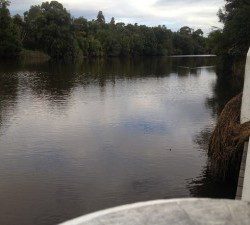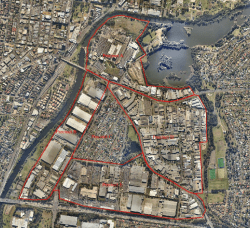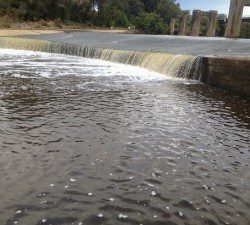
Prime waterfront land a stone’s throw from the Liverpool Central Business District is poised to become a riverside lifestyle hub of quality housing and employment opportunities.
Liverpool Council last night agreed to proceed with an investigation into the feasibility of an urban renewal plan for what it calls the Moorebank Georges River precinct.
The land along the east side of the Georges River starts near the M5 bridge at Casula and stretches past the Liverpool weir, all the way to Lake Moore, which is adjacent to the Chipping Norton Lakes.
It is mostly made up of older factories and warehouses, with some residential housing set further back from the river’s edge near Chipping Norton.
Liverpool Mayor Ned Mannoun tabled a mayoral minute calling on the council to:
1. Investigate the Moorebank Georges River area as an urban renewal precinct.
2. Develop a Master Plan for the Moorebank Georges River mixed use precinct to provide opportunities for housing and employment, with access to transport and infrastructure.
3. Explore options with current landowners and associated developers to fund the costs of this investigation.
4. The study also include land on the west side of the Georges River.
But before he got support for his plan, the mayor faced questioning on the funding cost of his plan, with former mayor Wendy Waller asking if landowners would be asked to contribute before the work had been done.
“Or will we go ahead and spend the money on this and then hopefully get something from the landowners,’’ Cr Waller said.
Council ceo Carl Wulff said the money would be obtained beforehand.

Mayor Mannoun commended the proposal to the council, saying it would fit in perfectly with the aims of the Building a Better City program.
“Moorebank is a unique precinct within Liverpool. Set along the Georges River and Lake Moore, Moorebank possesses prime waterfront potential,’’ the mayor said in the minute tabled at the start of the meeting.
“Its strategic location is enhanced by virtue of its closeness to Liverpool’s business hub and Liverpool Station, a key piece of public transport infrastructure, and also its connectivity to the South-Western Region and Greater Western Sydney through major road connections which include the M5 Motorway, Hume Highway, Newbridge Road, and Heathcote Road,’’ he said.
The redevelopment of the Moorebank Georges River precinct provides an opportunity to transform an old and degraded industrial area into a revitalised mixed use urban waterfront precinct in close proximity to Liverpool CBD, the mayor said.
“The redevelopment of this precinct will benefit from a high level of public transport accessibility provided by its proximity to Liverpool Station, and with upgrades to local bus routes, potential realignment of local roads and improvements for active transport options, including pedestrian and cycle routes.
“This area also provides a unique opportunity for Liverpool to help meet Sydney’s future housing needs and make a major contribution to providing for the additional 1.6 million people who will live in Sydney over the next 20 years.
“The area has the potential to be developed as a premium mixed use riverside lifestyle precinct with quality housing and local employment opportunities.
Redevelopment will deliver substantial environmental, recreational and community benefits to support the achievement of Liverpool’s potential as the third regional city

“A number of major landowners in this area are currently progressing individual planning proposals and have been in discussion with council officers about the technical requirements associated with their proposals. It is clear that this important strategic area requires a comprehensive and integrated approach to land use planning and infrastructure demands.’’
The investigation of the Moorebank Georges River Precinct given the green light by council will examine:
♦ The precinct’s potential to support higher levels of density, with a mix of housing and employment options;
♦ The unique characteristics of the precinct, including heritage, waterfront access, public open spaces, and walkability to support redevelopment;
♦ The urban design principles to support building types, public domain improvements, and designs that suit a sustainable precinct redevelopment;
♦ The level of connectivity of the precinct to the regional road network, and the potential infrastructure upgrades required to support precinct redevelopment;
♦ The level of connectivity of the precinct to the regional public transport network, including bus and rail, and the potential infrastructure upgrades required to support precinct redevelopment.
